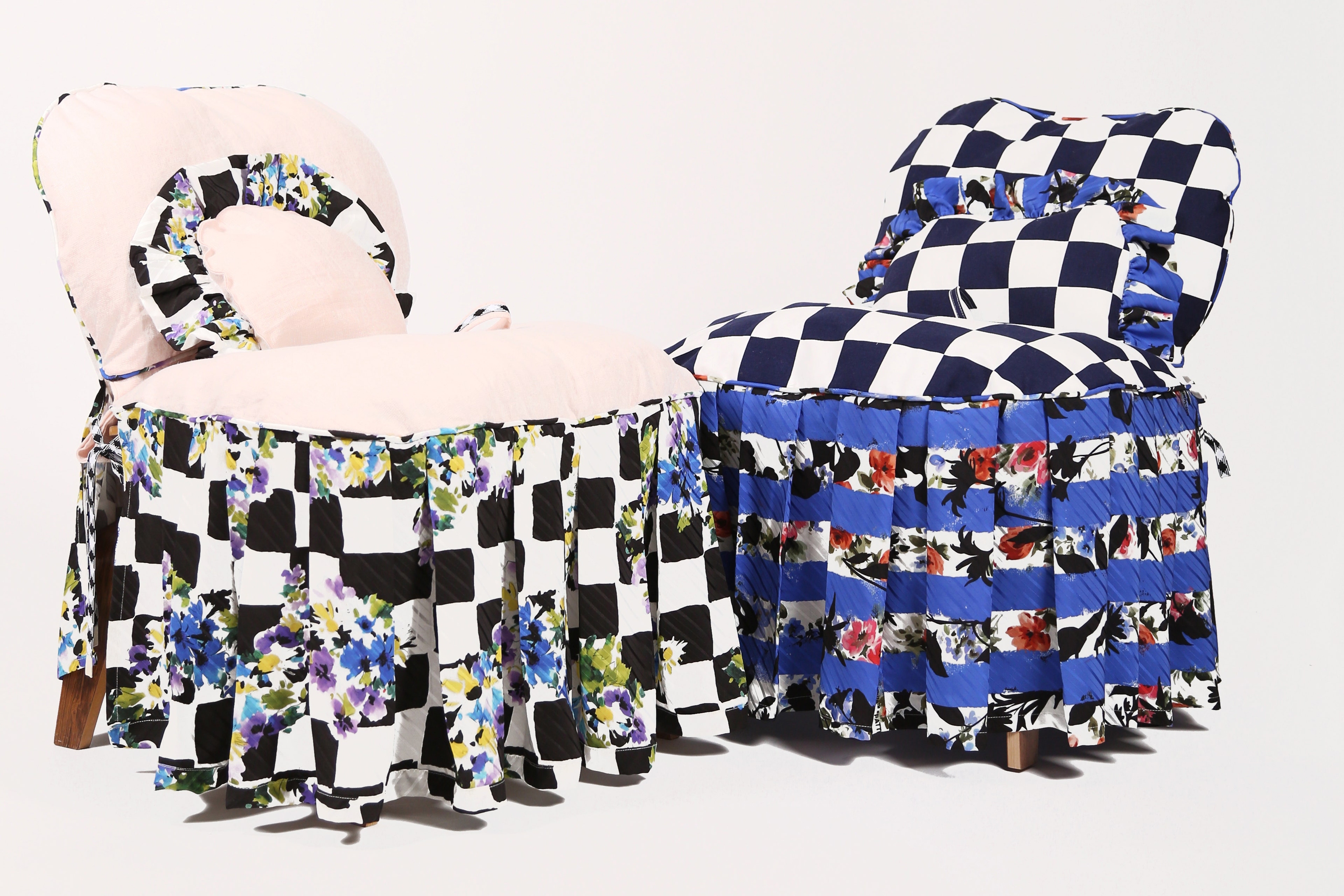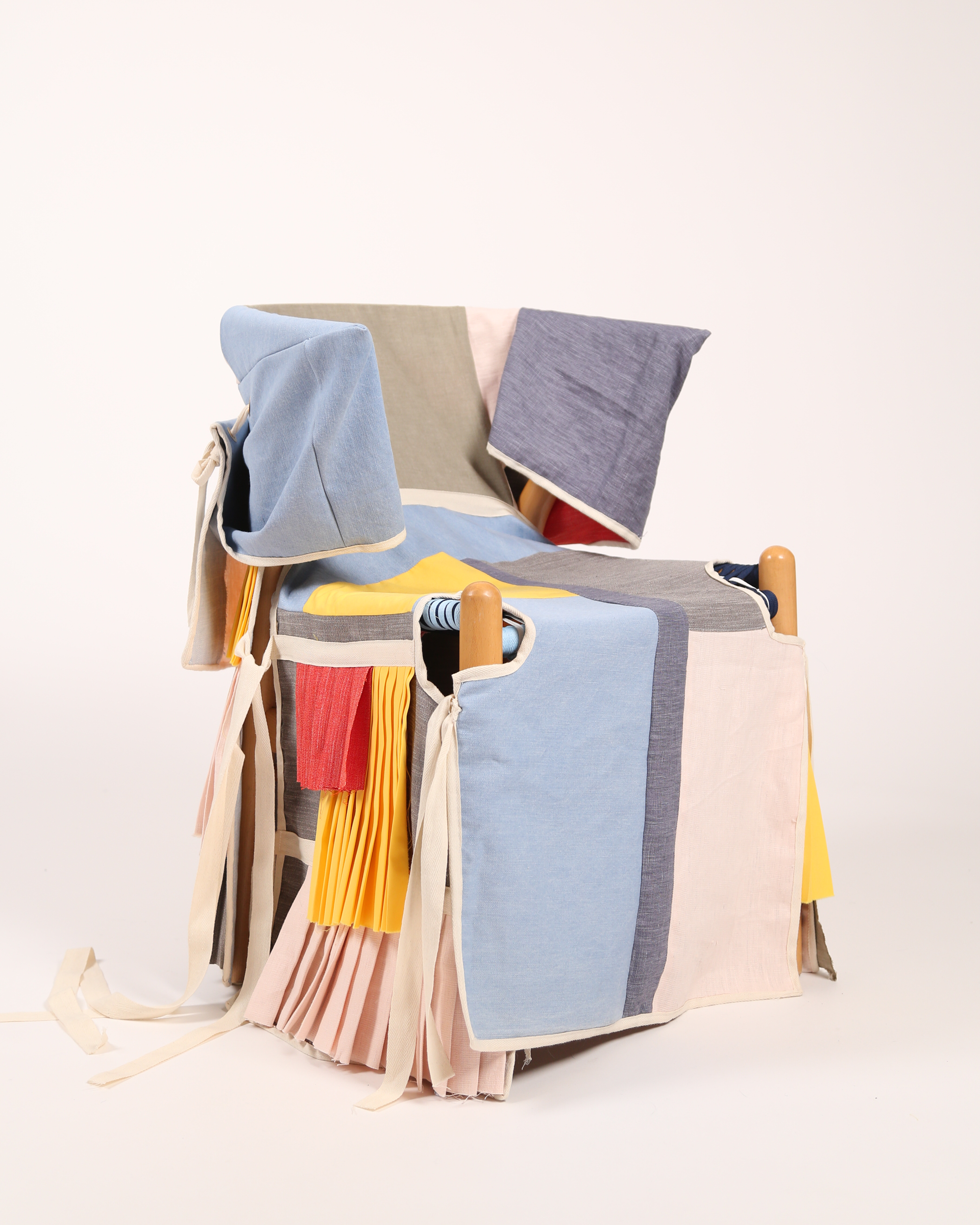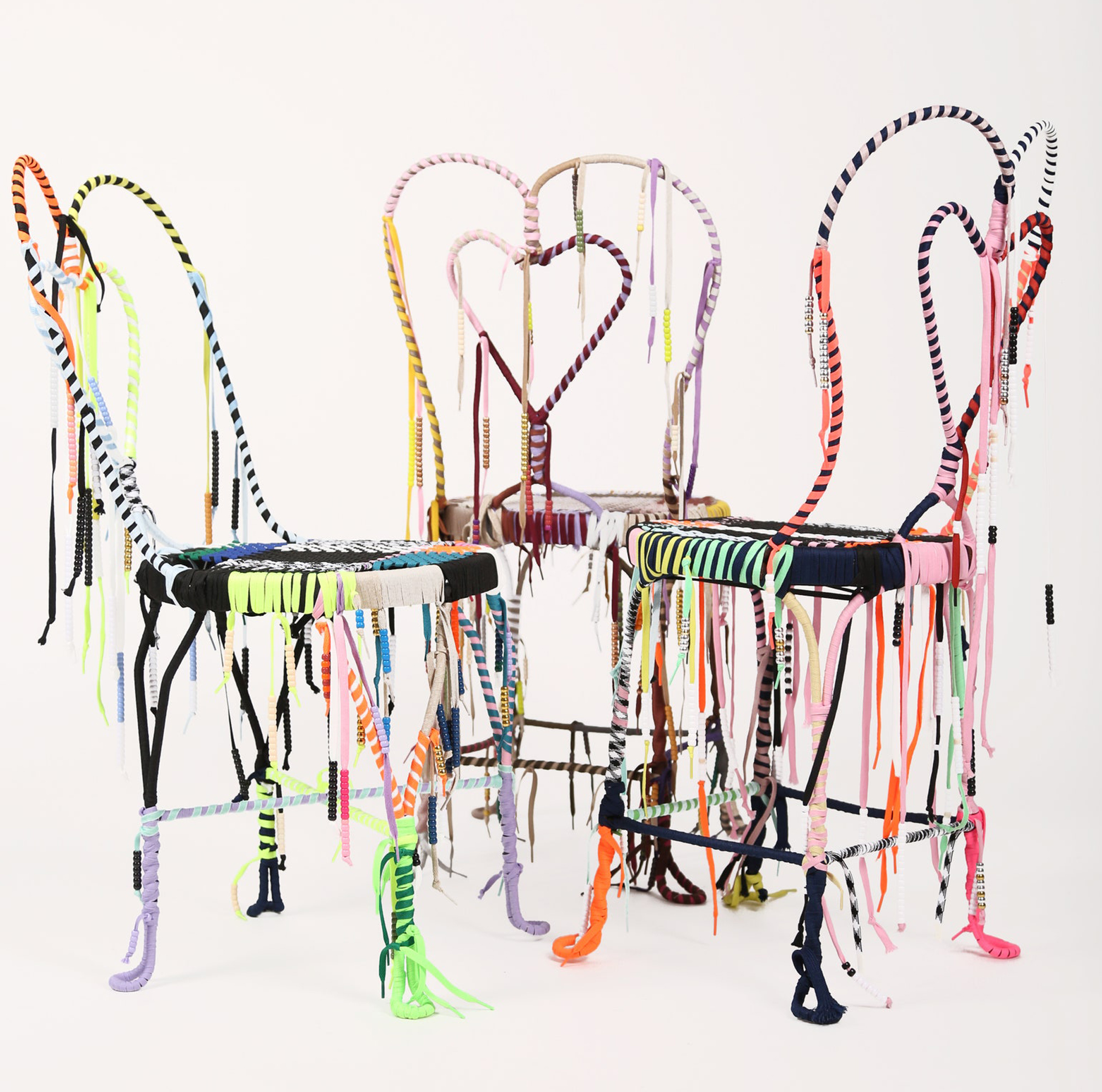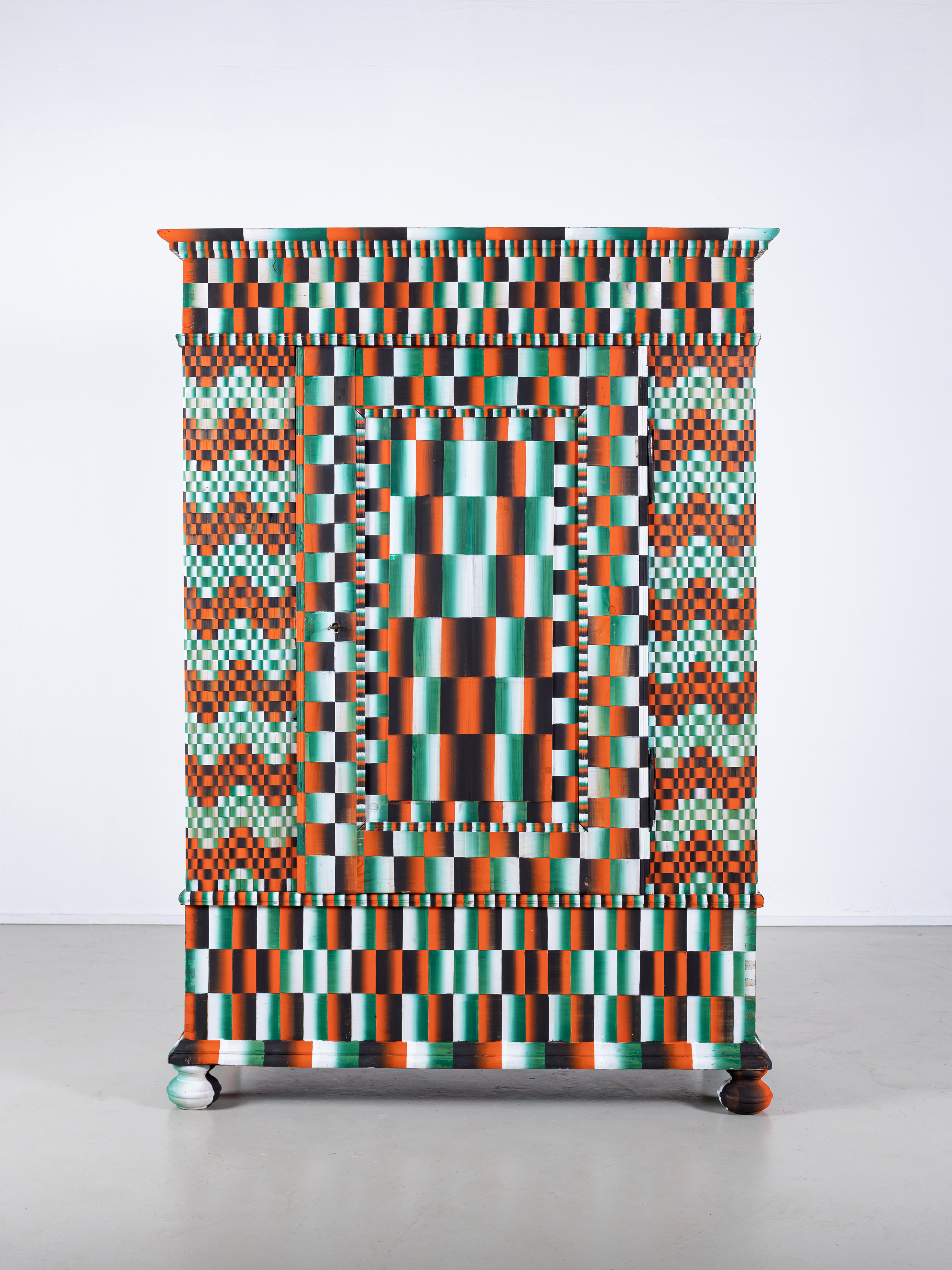Furniture 're-outfitting' is the designer trend for reimagining iconic pieces with bold new looks
Designers are ‘re-outfitting’ furniture to bring a fresh creative perspective to classic pieces. Just don't call it upcycling...


Sometimes, there isn't quite the word to describe a movement in design that's just emerging. For example, of late a concept has been on my radar which sees artists and designers repurposing older pieces of quality furniture to bring a modern maximalism to them. These pieces, always already beautiful in their own way, are being transformed from utilitarian pieces to decorative explorations – cabinets masterfully hand-painted with outlandish patterns, chairs re-imagined with decorative frills and textures.
It feels unfair to call this interior design trend upcycling, a word which once felt meaningful, but has since become synonymous with any form of altering furniture, from the sublime to the less-than-so.
Talking to designer Camella Ehlke, who this year launched a collection of classic chairs re-imagined with creative textiles, the answer reveals itself. For the designer, who has previously worked in the fashion industry, her work, she says, is akin to re-outfitting furniture. The idea of these reinventions as outfits feels like it follows the mood in fashion right now, too. They are often bold, even boisterous, combining unexpected colors and patterns with abandon.
Here, we explore Camella's work and the idea of furniture 're-outfitting'. Just don't call it upcycling...

Camella Ehlke is an artist and designer based in Brooklyn, New York. Previously, she co-founded fashion brand 555Soul, an influential streetwear design house that counted the likes of Virgil Abloh as a fan. Her first collection of reimagined chairs using textiles from the fashion industry, Hey What's Up, is represented by Guilty by Association.
What's the idea behind furniture 're-outfitting'?
‘Upcycling is a word that makes me cringe,’ says Camella Ehlke, the designer and artist behind Hey What’s Up, a collection of chairs re-imagined using surplus fabrics from the fashion industry. ‘It’s similar to how I’m cautious of terms like craft being applied to what I do. When it’s men in these spaces, it’s called fine art, but when it’s women, it gets called craft.’
Her debut furniture collection began as a spark of idea through conversations with legendary designer Virgil Abloh during the pandemic, a connection that stems from Camella’s background as co-founder of streetwear brand 555Soul. Looking to get creative with textiles again, Camella landed on the concept of creating artistic covers for a series of chairs using offcuts primarily provided by Virgil’s fashion brand Off-White. ‘Streetwear is all about collaborations like this,’ Camella tells us.

The base of some of the designs is the Eames plywood chair, another called Pleats on Pleats has a Hans Wegner Wishbone chair underneath its new outfit. Other designs highlight the high-low applications of Camella’s work. ‘The One Love pieces were metal chairs, rusting in the backyard,’ Camella says. ‘They’ve been wrapped in colourful Nylon laces, making them waterproof now.’
The Livingetc newsletters are your inside source for what’s shaping interiors now - and what’s next. Discover trend forecasts, smart style ideas, and curated shopping inspiration that brings design to life. Subscribe today and stay ahead of the curve.
Design house Gubi also became involved in the project, sending Camella two of its Grace/Tove chairs, which Camella reimagined by weaving the rattan with both reclaimed camouflage textiles and denim.

‘By using furniture, it was a step away from the human body,’ Camella says. Yet this idea of dressing chairs (many of which have iconic silhouettes interior design savants will recognise) in this manner is still in many ways a form of outfitting. These forms, just like bodies, are being dressed in a way that changes the perspective of their design.
Whether re-outfitting iconic modern furniture designs could be seen as sacrilege is something that Camella questions herself. However, her approach feels not only respectful of the design, but preservative, too. The Tove chairs, for example, would once cast a fan-shaped shadow in the light, yet once woven with Camella’s fabric, this disappears. Instead, she includes a floor mat, replicating the once-cast shadow, as part of the design. Weaving with denim was also a conscious decision. ‘I’ve always wanted to create a textile from jeans, and it actually means this chair, this iconic piece of design, is going to wear better thanks to the tough fabric covering.’

By and large, Camella’s outfits are removable, ensuring that these pieces of design history are preserved for future generations, but other brands practising this form of bringing a new perspective to existing furniture are taking a different approach. Dutch designers Gijs Frieling & Job Wouters have united under the modern cabinet painting brand Freeling Waters, and are bringing a unique, almost Op-Art style of painting to 18th and 19th century cabinets.
Yet, however decorative the painting of these cabinets is, it’s the form of the cabinet that survives. These ornate cabinets are unlikely to inspire in their original guise in a modern home in the same way they once did, but the introduction of colour and pattern is a way to dress them up to allow for a new appreciation of the form.
Like our wardrobes, it’s a form of everyday re-invention, though the body wearing the outfit remains the same.

Hugh is Livingetc.com’s editor. With 8 years in the interiors industry under his belt, he has the nose for what people want to know about re-decorating their homes. He prides himself as an expert trend forecaster, visiting design fairs, showrooms and keeping an eye out for emerging designers to hone his eye. He joined Livingetc back in 2022 as a content editor, as a long-time reader of the print magazine, before becoming its online editor. Hugh has previously spent time as an editor for a kitchen and bathroom magazine, and has written for “hands-on” home brands such as Homebuilding & Renovating and Grand Designs magazine, so his knowledge of what it takes to create a home goes beyond the surface, too. Though not a trained interior designer, Hugh has cut his design teeth by managing several major interior design projects to date, each for private clients. He's also a keen DIYer — he's done everything from laying his own patio and building an integrated cooker hood from scratch, to undertaking plenty of creative IKEA hacks to help achieve the luxurious look he loves in design, when his budget doesn't always stretch that far.